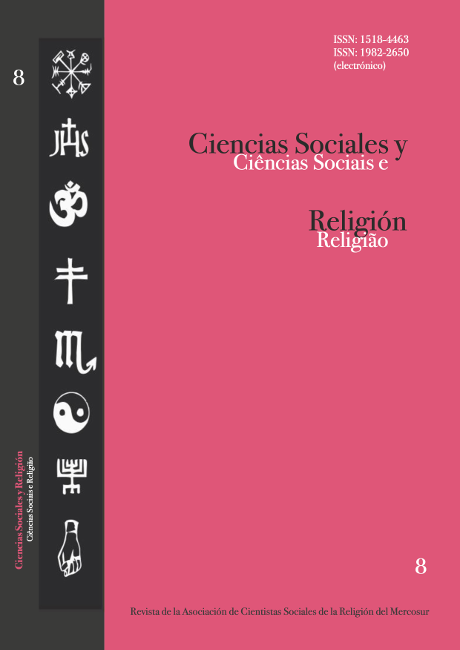Abstract
The perspectives which are exploit here come from a historically-situatedand limited case: a distinction, resulting from a pastoral (and politic) strategy,established in the first half of the twentieth century by catholic Church in Portu-gal between “romaria” e “peregrinação”. The former being a complex andatavistically-popular religious manifestation, oriented toward a sacralization of thehuman existence in its own profane dimension, whereas the latter is oriented towarda “sacramental” transfiguration of this existence, sublimated by means of theecclesiastic, official rites. Two ideal-typical models, which are open to gradations,relative weights and dominances, which can be made compatible with each otheras well as with several other models, and whose generalizing application in historymakes sense. For they both comprehend different ways of taking a “pilgrim”relationship with time, space, the body, the collective dimension. One must addthe presence of other dialetics, which are, to some extent, always reshaping. Thesedialetics are, eventually, even factors of transition between one model and theother: those of the relationship between religious dimension and political dimension,between devotional journey and tourist excursion.
References
ABUMANSSUR, E.S., Romarias e turismo religioso : novos olhares sobre um antigo fenômeno. In: MARIN, J. R. (Org.). Religiões, religiosidades e diferenças culturais. Campo Grande: UCDB, p. 252-264, 2005.
BOURDET, J. Des mains de femmes sur les parois des grottes. Le Figaro, 5-01-06. 2006.
BREHIER, L.; AIGRAIN, R. Saint Grégoire le Grand, les Etats barbares et la conquête arab. In: FLICHE, A. e MARTIN, V. (Orgs.). Histoire de l’Eglise, t. V, Paris: Bloud et Gay, 1938.
BROWN, P., Corpo e Sociedade. O homem, a mulher e a renuncia sexual no início do cristianismo. Rio de Janeiro: Jorge Zahar,1990.
CARNEIRO, S. de S. Rumo a Santiago de Compostela. Rio de Janeiro, 2006 (no prelo).
CLAVERIE, E. La construction d’une identité nationale à Medjugorje. Terrains, 38, 2002.
CLOTTES, J. Ailleurs et autrement, 21/26 – 12- 2000. I., Internet.
FOUCAULT, M. Microfísica do poder. Rio de Janeiro: Graal, 1979.
GARCIA, M-A. Ailleurs et autrement, 21/26 – 12- 2000. Internet.
HERVIEU-LEGER, D. Catolicismo. A configuração da Memória. Rever (eletr.), 2, 2005: 87-107.
LAMMY-EMPERAIRE, A. La signification de l’art rupestre paléolithique. Paris : Picard, 1962.
LEROI-GOURHAN, A. Préhistoire de l’art occidenta. Paris : Mazenoud, 1965.
LEVI-STRAUSS, C. As estruturas elementares do parentesco. Petrópolis: Vozes, 1976.
RECROIX, X. Récits d’apparitions mariales Pyrénées Centrales. Revue du Comminges, 1986-88.
SAINTYVES, P. Les Saints successeurs des dieux. Paris: Librairie Critique, 1985 (1907).
SANCHIS, P. Arraial, la Fête d’um peuple. Les pélerinages populaires au Portugal. Paris : Ed. de l’EHESS, 1994.
SCHMITT, J-Cl. Le Saint Lévrier. Guinefort, guérisseur d’enfants depuis le 13e siècle. Paris: Flammarion, 1979.
SILVA, S.A.da. Virgem/Mãe/Terra. Festas e tradições bolivianas na metrópole. São Paulo: Hucitec/Fapesp, 2003.
STEIL, C. A. Peregrinação, romaria e turismo religioso: raízes etimológicas e interpretações antropológicas. In: ABUMANSSUR, E.S (Org.). Turismo religioso: ensaios antropológicos sobre religião e turismo. Campinas: Papirus, 2003.

This work is licensed under a Creative Commons Attribution-NonCommercial-ShareAlike 4.0 International License.
Copyright (c) 2020 Pierre Sanchis
